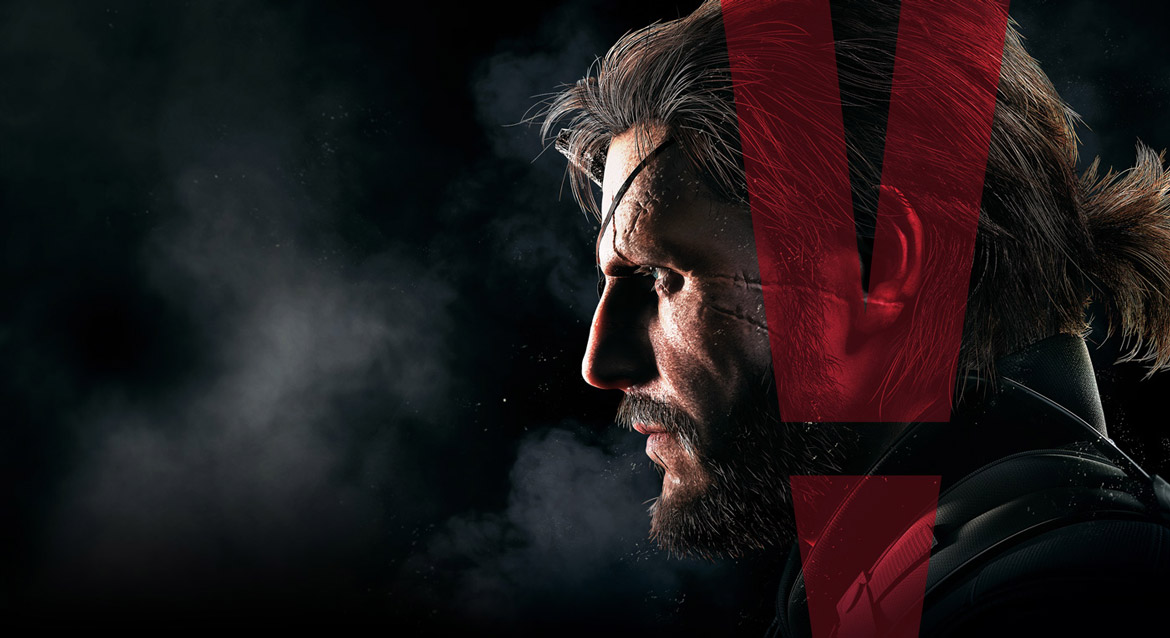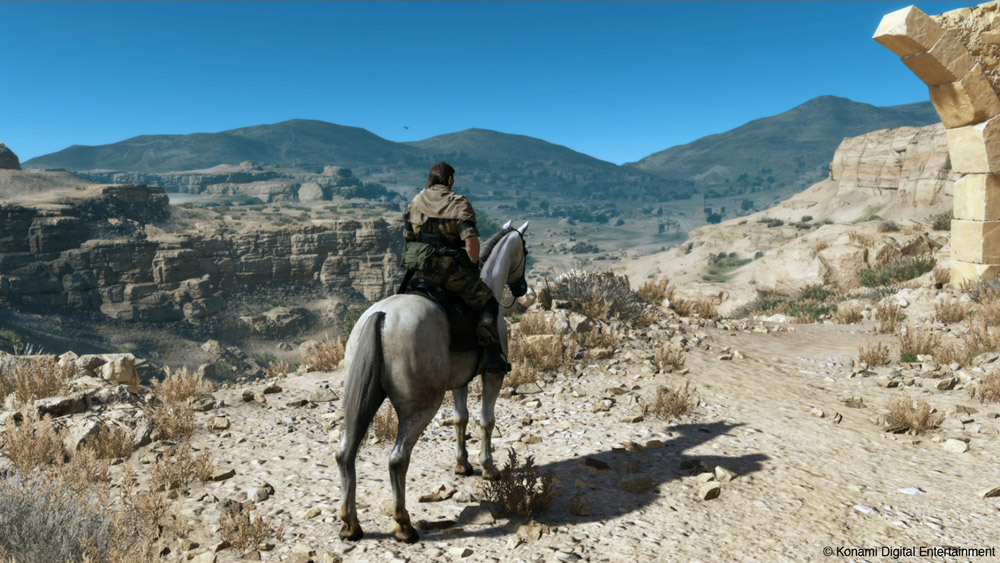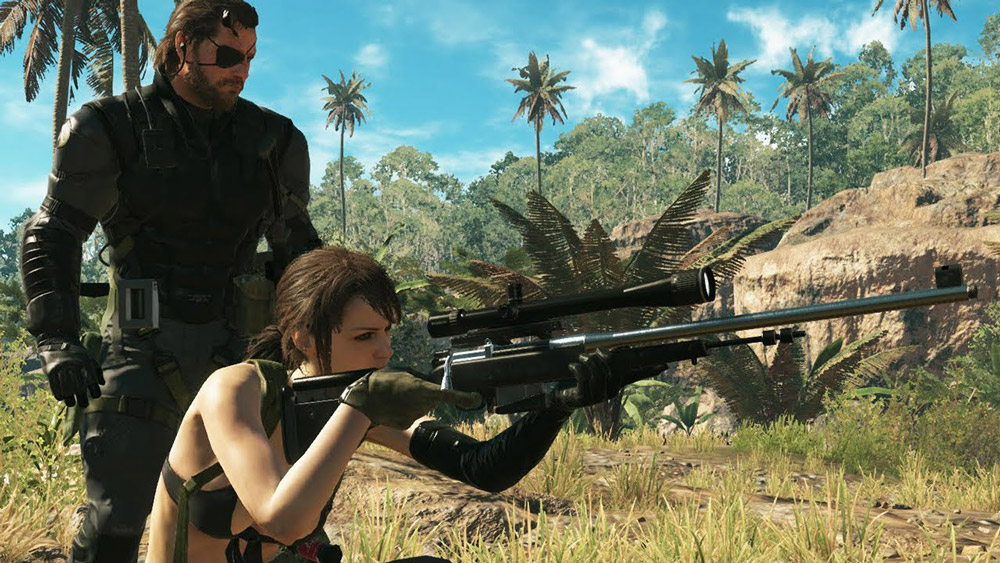TL;DR
Despite a troubled development and a shift in voice actors, Metal Gear Solid V: The Phantom Pain delivers a visually stunning and mechanically deep stealth-action experience. Kojima's signature directorial flair is evident in its epic, open-world gameplay, challenging AI, and robust base-building elements. While the lack of checkpoints and a different Snake voice might divide fans, the game stands as a technically brilliant and emotionally resonant finale to a legendary saga. Discover if this conclusion lives up to the Metal Gear legacy – dive into the full review!
The concluding chapter in Hideo Kojima’s epic game series has been marked by delays, internal challenges, and controversy. We’ve thoroughly evaluated the game and offer our assessment of whether this finale lives up to the legacy of the stealth action saga.
It’s remarkable that the Metal Gear series reaches its 28th anniversary this year. The original Metal Gear debuted in 1987 on MSX, C64, and NES – platforms unfamiliar to many contemporary gamers. The series achieved significant mainstream success 11 years later, in 1998, with the PlayStation title Metal Gear Solid, an outstanding third-person stealth-action game featuring a veteran hero voiced by David Hayter. Publisher Konami and Hideo Kojima, the game’s designer (or “director,” as he prefers), found themselves with a highly successful franchise, resulting in three sequels across subsequent console generations. As the series gained prominence, so did the revenue, expectations, and the profiles of those involved.
Metal Gear Solid V was initially announced in 2012 at a gaming awards ceremony in the USA. A compelling introductory sequence, featuring a bandaged man in a desolate hospital, served as a teaser under the enigmatic title The Phantom Pain, which, as we soon discovered, alluded to the literal sensation of phantom pain. However, the full game’s release would be considerably delayed. In the preceding year, we experienced a preview in the concise, yet well-executed, Metal Gear Solid V: Ground Zeroes, which offered a glimpse of the gameplay mechanics to come. Simultaneously, Konami announced a further delay for the final game, accompanied by reports and rumors of internal conflicts. The relationship between Kojima and Konami reportedly deteriorated, Hayter – the established voice of Snake – was replaced by Keifer Sutherland, and promotional material featuring figures with suggestive designs surfaced. It is now widely understood that Metal Gear Solid V: The Phantom Pain represents the culmination of the series, or at least the final installment with Hideo Kojima at its creative center. The question remains: what does this finale deliver, and was it worth the extended wait?
MGS V: TPP commences with a prologue titled “Awakening.” For those familiar with Ground Zeroes, the narrative picks up following the significant explosion. The player’s perspective shifts to first-person, observing nurses attending to medical apparatus, physicians evaluating vision, and the protagonist’s gradual regaining of consciousness. The initial questions arise: What transpired? How long has elapsed? It quickly becomes apparent that not all parties are pleased with the awakening, as the hospital becomes engulfed in flames and transforms into a war zone. Weakened and with diminished muscle strength, the player struggles to escape, navigating scenarios involving gunfire from elite soldiers and the threat of immolation from an unknown entity. This marks the player’s entry into The Phantom Pain.
The opening hour of MGS V: TPP delivers a powerful initial impact. It immediately underscores Kojima’s distinctive directorial approach to game production. The graphical fidelity is exceptional, approaching photorealism. Furthermore, the frame rate is remarkably consistent, resulting in fluid gameplay and a camera system that emulates the perspective of a handheld camera. The experience is undeniably epic and represents one of the most compelling playable introductions in recent memory. The prologue effectively establishes characters, backstory, and tutorial elements in a highly engaging manner. It seamlessly blends cinematic narrative with player agency, allowing for strategic decision-making.
As the player progresses, elements from Ground Zeroes become more apparent. Prior experience with previous MGS titles will enhance the player’s understanding, as numerous plot threads converge and questions are addressed. However, familiarity with characters like Ocelot, Big Boss, and the Diamond Dogs is not essential for immersion in the game world; players can access the backstory through a variety of cassette tapes (the game is set in 1984, during the era of the Sony Walkman). MGS V: TPP is primarily a stealth game with action elements, emphasizing covert operations, silent takedowns, and the use of non-lethal weaponry. Direct confrontation with explosives and firearms will likely result in a swift and unsuccessful outcome. The enemy AI is competent, and Snake’s vulnerability to gunfire necessitates a strategic approach. Consequently, MGS V: TPP may be perceived as a challenging game, particularly for impatient players. Success hinges on careful planning, incremental progress, and thoughtful decision-making. This fosters a heightened sense of tension and engagement, where a single misstep can jeopardize the entire mission. Moreover, MGS V: TPP can be unforgiving, as the absence of checkpoints within missions necessitates restarting from the beginning upon death. This can be particularly frustrating after significant progress.
Some mitigating factors are present. While the game lacks a traditional difficulty setting, the binoculars serve as a valuable tool for identifying and tagging enemies, providing persistent awareness of their movements. Furthermore, repeated attempts on a mission unlock the option to utilize heavy artillery, enabling the player to call in an airstrike from the rescue helicopter. However, this tactical advantage comes at the cost of limiting the mission rank to A. The game’s AI exhibits advanced behavior, demonstrating sensitivity to both sound and movement, and adapting to the player’s tactics, thereby enhancing both tension and strategic possibilities. For example, if an enemy witnesses a comrade succumbing to a tranquilizer dart, an immediate alert is triggered, prompting heightened vigilance and a search for the player. The frequent use of gas grenades will prompt enemies to equip gas masks and attempt to locate the player’s position – creating opportunities for flanking maneuvers and tactical advantages. The only notable departure from realism is the “extraction” of enemies via the Fulton system, a balloon-based technology that transports incapacitated soldiers to the player’s home base for recruitment. This process, which involves a screaming, balloon-borne enemy, can occur without detection by nearby Spetsnaz forces.
MGS V: TPP offers considerable depth, rivaling titles such as Witcher 3 in terms of its menu system. Players oversee a headquarters in the Seychelles, where they can train personnel, develop new weapons and equipment, and recruit interpreters. The iDroid device provides access to maps, audio tapes, an in-game encyclopedia, and the ability to select main story or side missions. MGS V: TPP is a comprehensive gaming experience that requires dedicated playtime. Missions typically last 40-60 minutes, depending on skill and the pursuit of optional objectives. Missions cannot be exited prematurely, and pausing is not permitted, making time management a factor in the final score, which determines rank, heroism, and GMP, the in-game currency. GMP can be acquired through microtransactions, a practice that is often viewed negatively in full-priced games. However, in-game earnings appear sufficient, suggesting that microtransactions are primarily for players seeking accelerated progression.
From a technical standpoint, MGS V: TPP is exceptionally well-executed. The graphics are generally outstanding, and despite the prevalence of desert environments, the animations, camera effects (including depth-of-field), and frame rate are consistently impressive. It arguably stands as the most visually refined title on current-generation consoles. The PS4 version exhibits slightly sharper detail due to its native 1080p resolution, compared to the Xbox One’s upscaled 900p. While the difference is not substantial, the increased detail is noticeable, particularly during binocular usage. The audio design is equally commendable, with Harry Gregson-Williams’ score evoking comparisons to Hans Zimmer’s work on films such as The Rock and Black Hawk Down. The voice acting is generally strong, although Keifer Sutherland’s portrayal of Snake does not quite match the standard set by David Hayter. His character is also notably taciturn, raising questions about the rationale behind his casting. The script is generally well-written, and minor instances of simplistic or juvenile content can be overlooked given the overall engaging and emotionally resonant narrative.
Metal Gear Solid V: The Phantom Pain represents a milestone in contemporary game design and a demonstration of technical prowess on current-generation hardware. It is bittersweet to witness Hideo Kojima concluding a nearly 30-year saga with a culmination that represents a career-defining achievement. While not flawless, with the absence of mid-mission checkpoints and limited environmental variety representing minor drawbacks, the game offers an immersive experience within a compelling world. Ultimately, it is a memorable adventure that showcases the capabilities of the PS4 and Xbox One platforms.
Highly recommended.
Note: The online component of MGS V: TPP experienced instability during the review period. Konami is addressing the server issues, and we will provide an assessment of the online features in a future update.





